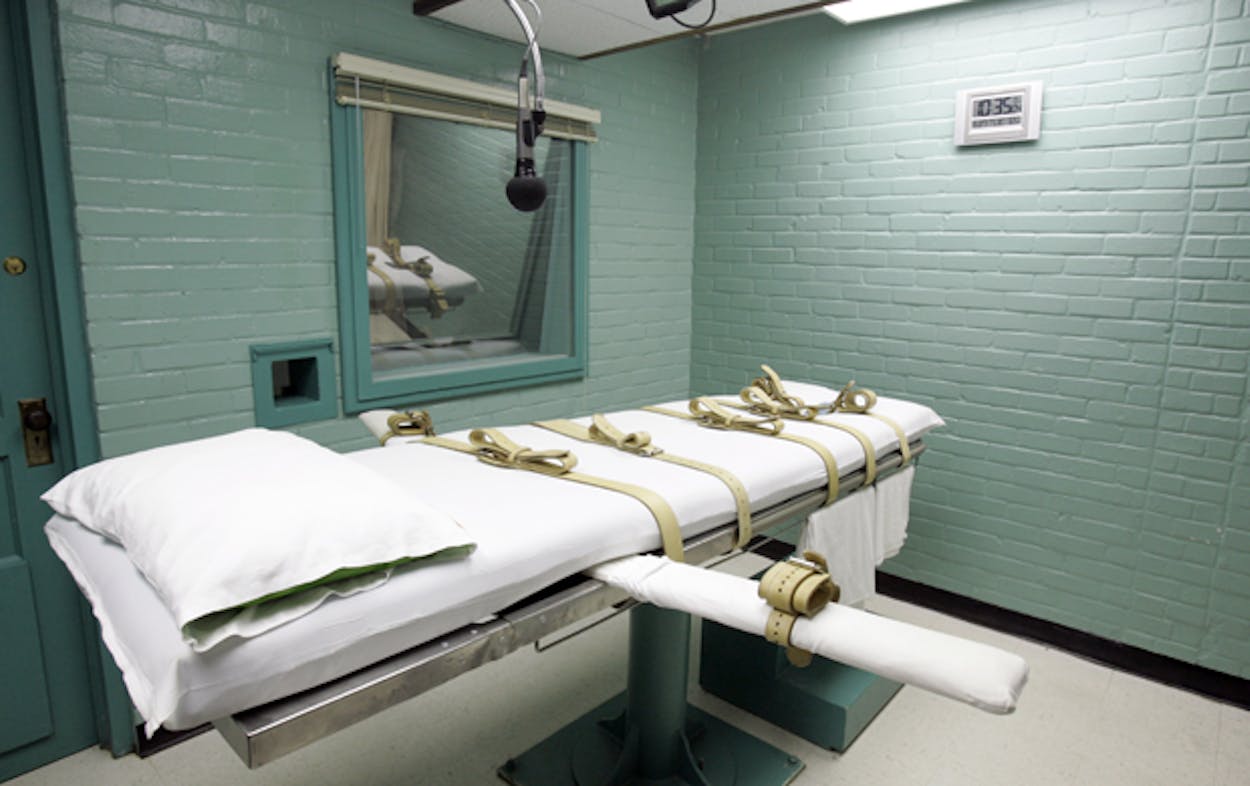
Three times in the last two years, the U.S. Supreme Court has stayed Cleve Foster’s execution. But Tuesday night, the court declined to intervene, and the 48-year-old became the ninth man put to death by the state of Texas in 2012.
Foster was sent to death row for the 2000 slaying of Sudanese immigrant Nyaneur “Mary” Pal, 30, in Fort Worth. Prosecutors believe that several months before Pal’s death, Foster raped and murdered another woman, 22-year-old Rachel Urnosky, but he was never tried on those charges.
Foster, a former Army recruiter, had maintained that his friend and recruit, Sheldon Ward, fatally shot Pal, Michael Graczyk reported for the Associated Press. Pal’s body was found in a drainage ditch and Urnosky’s in her apartment, where she was killed.
Gracyzk offered these details about the evidence linking Foster to the crimes:
A gun in the motel room where Foster and Ward lived was identified as the murder weapon and was matched to Rachel Urnosky’s fatal shooting at her apartment. …
Foster blamed Pal’s slaying on Ward, one of his recruits who became a close friend. Prosecutors said evidence showed that Foster actively participated in her death, offered no credible explanations, lied and gave contradictory accounts about his sexual activities with her.
The two were convicted separately, Ward as the triggerman and Foster under Texas’ law of parties, which makes participants equally culpable. Pal’s blood and tissue were found on the weapon, and DNA evidence showed that both men had sex with her.
Ward died of cancer in 2010 while awaiting execution.
On August 29, Graczyk interviewed Foster and the inmate described his prior visits to the death chamber:
What Cleve Foster remembers most about his recent brushes with death is the steel door, the last one condemned Texas inmates typically walk through before their execution.
“You can’t take your eyes off that door,” he said.
Condemned inmates get four hours to visit with family members on the day they are scheduled to die before they are shuttled the 45 miles from death row, in the Polunsky Unit, to the death chamber in the Huntsville Unit, where, according to Graczyk “prisoners have been put to death for nearly a century. The last 485 have been by lethal injection; the first 361, from 1924 through 1964, from the electric chair.”
Walking into the Huntsville Unit is “a little spooky,” Foster said. “You can tell it’s been there awhile. Everything’s polished, but still it’s real old. You look down the row. History just screams at you.”
Two hours after the U.S. Supreme Court declined to stay Foster’s execution for the fourth time, prison officials began administering a fatal dose of pentobarbital to him.
“Yes, you know I sat in my cell many days wondering what my last words would be: love for my family, grandson, friends. I love you very much. Tonight when I close my eyes, I’ll be with my Father,” Foster said in his final statement.
According to Graczyk, “As the drugs began taking effect and while he was repeatedly saying he loved his family, he began snoring; then he stopped breathing.”
Members of both Urnosky’s and Pal’s families were on hand to watch Foster’s execution. Rachel Urnosky’s father expressed unhappiness that Foster’s previously scheduled executions had been stayed. “It’s like ripping off a deep scab each time, preventing the wound from being able to start healing,” Urnosky told Gracyzk. “Now the wound can start closing.”
Foster was the second man Texas put to death in less than a week. Eight more executions are scheduled for this year.







